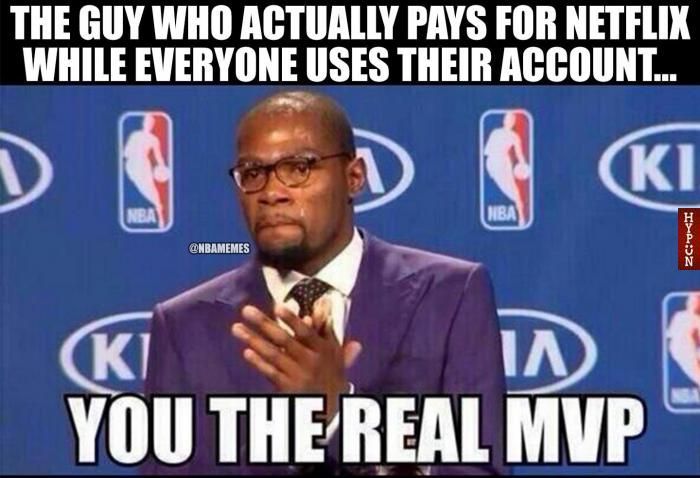We have all heard the saying, “Customer is King” and many companies showcase ‘customer satisfaction’ as one of their guiding principles. But I feel that the bulk of customers today, a.k.a Millennials and Gen Z, are using it to their advantage. They are trying to stretch the extent a certain organization would go for satisfying their customers. Many times it feels like the moral code is taken out of the company’s hands. Let’s take a deep dive into what I mean.

In this post you will find
Gray Area surrounding customer satisfaction
We are going to be focusing on only companies that are selling physical products or provide a service for people to buy physical products.
To get a better understanding, let me start this with an example. Suppose you are testing a product, you would have certain conditions and test cases that the product must pass in order for you to determine that the product is ready for sales. These test cases are formed keeping the ideal customer in mind and these cases exhaust every possible way in which he/she would use the product. These conditions act as the metrics by which we determine whether something is ready or not.
Consider the same process when it comes to virtues that a company wants to follow. One of the common virtues that most companies follow is something in the lines of ‘innovation is one of the pillars of this organization’ blah blah. You can measure this by the regularity of innovative ideas that come up within the company, the number of new ideas that are currently being worked upon, the amount of failed experiments, etc. Similar to this we can measure anything we want to do, except customer satisfaction.
I have been trying to get my head around this, but how can a company measure how well their customer satisfaction is. The main metric would definitely be the number of unhappy customers you have. Then this begs a different question, how do you know/measure if your customers are happy or not? How do you differentiate customers who are genuinely unhappy with the ones who are just trying to play the system? The simple answer is that you cannot know and it would make sense to keep all your customers happy from an organization’s point of view.
This gray area is what many people all over the world are exploiting successfully.
Manipulation of the gray area
It would make more sense to name the companies in my mind, they are Amazon (E-commerce Companies) and Doordash/Swiggy (Food Delivery Platforms). The customer always gets his way with the help of the no-questions-asked returns policy these companies have in place to improve their “customer satisfaction”
Let me illustrate how people are using this to their advantage. Suppose you are going on a trip to the Bahamas. You have literally nothing and you live butt naked (don’t get me wrong, it is the pandemic so it is possible). You get on Amazon and you order clothes, even underwear, sunglasses, cologne, DSLR camera, lens, and everything you can think of under the sun, while ordering on Amazon you get hungry so you order lunch from Doordash. How cool would it be if you could spend only the airline fare and you get back the rest of the money?
Well, surprise! You can do that. Get three amazon accounts. An average person has a minimum of two credit cards. Two of the accounts get one of your credit cards each and the third one gets your debit card. Order all the stuff you need split evenly across these three accounts. Go on the trip and come back. With the help of Amazon’s 30-day no-questions-asked return policy, you start to return the items in a spread-out manner over 30 days. They do ask you the reason, you just give any reason that comes to your mind and it is accepted 99.99% of the time (safer than a condom). You get all your money back, and you do it again for your next trip.
Guess what, you can even get back the money you spent on Doordash. Just raise a case on customer support and say stuff like, ‘my food was cold’, ‘my food was opened and someone had eaten it’ or ‘they used fish oil but I told them not to use it’ and you will get your money back.
This is how tens and thousands of people are taking these companies for a spin.
Who are the actual victims?
In the case of food delivery companies, they take up the charge on themselves and have an internal rating system, where if the food from the same restaurant gets returned more they would recommend them less and give out warnings to that restaurant. If orders are still returned then they risk getting delisted from the app. Why don’t the food delivery companies charge the restaurant directly? They want to give the restaurants the benefit of doubt to a certain extent because ultimately the more and varied number of restaurants they have on the app, the better for the app as it gives their users ample options. So these apps give as much freeway as possible.
So if the apps are taking on the charge then it eats into their profits. Wait, the delivery apps don’t have any profit, most of the apps are yet to break even. So who absorbs these charges? the answer is Softbank, oh sorry, ‘Venture Capitalist’ firms. All the money that could have been used to ease losses, to improve the product, are used to pay for customer satisfaction.
In case of e-commerce companies, Amazon has enough cash flow to deal with these false product returns and most of the returns do not hurt Amazon because the seller absorbs the charges. But the real victims are the ones who have their stores on Shopify, more specifically people who have decided not to go through Amazon. Many of these smaller companies have better return policies in hand, but they risk losing customers.
Suppose a scammer orders from one of the smaller companies and tries to return it. First, they have a small return period, possibly 7 days. If the scammer makes it in time to return the product, second, they ask all the relevant questions and try to deduce whether the product returned is genuinely a faulty one. They realize that the customer is trying to scam them and they reject the return. The scammer is annoyed, gives a bad review on your website and other places he can find your listing on. Tells his friends not to purchase from you as you have ‘bad customer service’. This negative flywheel goes on and on and it will hurt your business. You either become a ‘no-questions-asked return’ company, or you live long enough to become the villain (I couldn’t help it).
People then start migrating towards Amazon as they trust and believe that Amazon has got their back when they receive a genuinely faulty product. This trust is what the scammers are playing with.
Why any possible solution is in the gray area as well?
This is morally wrong on so many counts. This is like a never-ending cycle. Amazon could tighten their return policy, then they risk losing customers to Walmart or Flipkart who also offer a no-questions-asked return policy. On the flip side, all these companies can come together and set these standard rules for everyone to follow, that would never happen, but even if it did then the government comes in claiming that companies in the same sector are colluding against ‘customer satisfaction’ and that the end user’s comfort and care is what they are concerned with. This is a borderline Anti-trust case.
If the governments agree to that standard rules then there is also a possibility of the manufacturers finding a loophole to maximize profits. They could then start being lethargic and produce below-quality products often.
At the outset, the current situation of a no-questions-asked return policy is the best option among the ones we got, but it is so morally wrong that something could be done about it.
I know that this is not talked about by most companies, they just let this slide. But this could be like a huge growth hack strategy, similar to the one that Netflix used to curb password sharing. We all know that people share their Netflix accounts with more than just one person and in my group, nearly 15 people share a four-simultaneous-screens account. It is really cost-effective, when you split the $17.99 by 15 people, it comes to around a dollar for each person and it is more than just worth it for having access to Netflix. There were memes like these ones:



Netflix knew about this password sharing and decided to do nothing against this even if it is morally wrong. They felt that if more people watch their content, it would lead to more interactions on online social platforms about their shows which could be a passive way to market their content which invariably could lead to more paid users. It had a flywheel effect and it actually worked. Now Netflix is being viewed as more of a commodity rather than something they get in addition to regular entertainment expenses such as cable television.
Now Netflix is testing out curbing down its password sharing and if users who are using shared accounts gets kicked out, they would eventually get themselves a new paid account as they are so hooked on to the platform. This might just be the greatest growth hack of all time. I got this idea via a twitter user. Here is his tweet:
I am guessing maybe somebody at Amazon has the solution figured out and is just waiting to gain an even bigger edge over competitors before implementing that. Or maybe Amazon is providing this as a feature disguised as a bug to trick their customers into thinking that they are gaming the system when in the end Amazon was increasing the number of transactions happening on their platforms to boost numbers and gain seller’s trust that Amazon is the best company to partner with to increase sales.
This website has a detailed look at this and even the solutions they offer are not something you would consider as ‘The Solution’. I just feel that there is more to this, maybe I am way over my head. Let’s see.
Closing:
These are just my thoughts on this topic. I would be on the lookout if a possible solution pops up and I would definitely update this article. If you come across any then please do send them to me via the comments section or shoot an email to [email protected]. Check out my other articles here.


